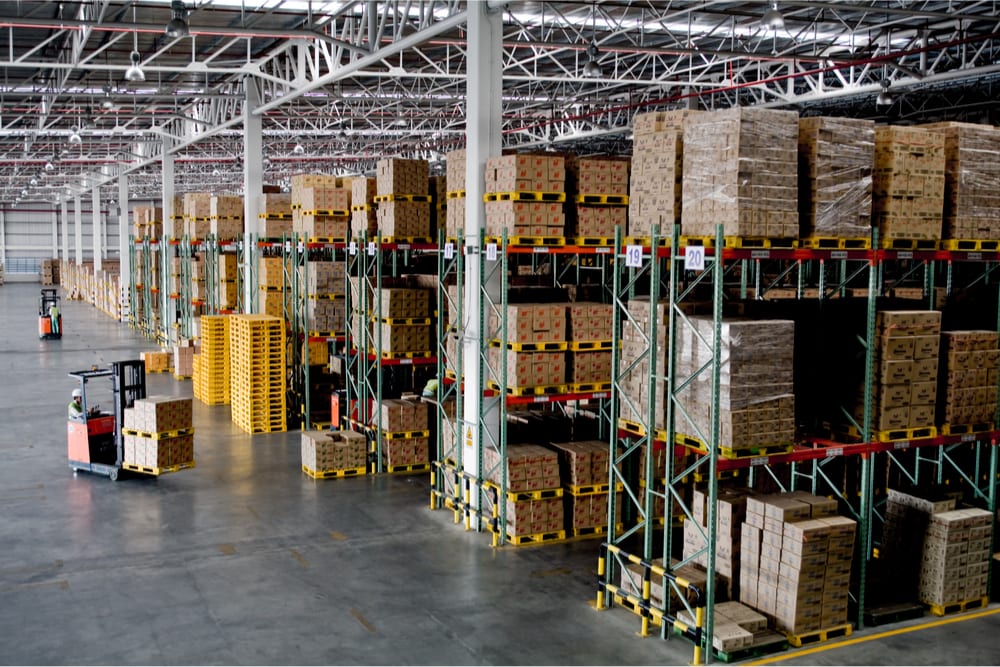Ecommerce Warehousing
Table of Contents
Defining Ecommerce Warehousing
Ecommerce Warehousing, as the name suggests, is a storage system that provides storage of physical goods before they are sold online. This warehousing involves safe and secure structure of storing products, and maintaining a tracking system to track the location of the stored items when they arrive, during their period of being in stock, and the quantity in hand at any given time.
Ecommerce Warehousing is a very integral and critical part of market, business and transport logistics. To make it efficient and a successful component of ecommerce, there are some practices that need to be set into place.

Ecommerce Warehousing
Ecommerce Warehousing and 13 Best Practices To Follow
Ecommerce and online purchasing has made sale and purchase very easy and comfortable. With the holidays and festivities around the corner, millions of Indians turn to online shopping to purchase gifts and items they need. Even though millions more still go to brick-and-mortar stores, there is a definite push towards online and omni-channel shopping. Thus it is increasingly important to invest in Ecommerce Warehousing facilities.

Ecommerce Warehousing
The success of online shopping depends on a good and efficient Ecommerce Warehouse Logistics System. These 13 Best Ecommerce Warehousing Practices help establish a successful system of operations.
1. Swift Clearance and Proactively Pulling Orders As Fast as They Come In.
With a boost in online shopping, Ecommerce warehouses are processing more orders than ever before. Also, the range of product profile in ecommerce warehousing is highly varied. A single ecommerce warehouse is very often responsible for processing groceries, fresh fruits and vegetables, beauty supplies, apparel, and practically any other type of product. Shippers are required to proactively pull orders as fast as they come in. The most important action to be considered in this scenario, to ensure success, is to prioritise the orders to meet the demands of the consumers.
2. Returns of Products Must Be Managed Quickly and Effectively.
Return of deliveries are a very important segment of ecommerce. Efficient and timely movement of returns is critical to providing consumers with peace of mind while shopping online. Amazon and Wal-Mart offer consumers attractive return options, making any possible returns easier and virtually free to consumers. It is important that shippers be prepared to take on the costs of free return shipping. They can do this by offering assistance on the shipping labels, and processing returns as fast as they come in.
3. Tracking Progress and Order Fulfillment Processes Accurately With The Help Of Metrics.
An important part of the multichannel supply chain is the endless flow of incoming orders via ecommerce. It is imperative for shippers to use metrics to track the percentage of orders fulfilled within time requirements, and number of orders shipped within a given time frame. Accuracy in orders picked, packaged and shipped, and labor productivity is very important and can be tracked by use of metrics. Each of the metrics relates directly to consumer promises, such as free two-day shipping.
4. Single Management System For All Order Types.
In the traditional structure, order channels are split amongst different distribution centres. All orders for retail spaces come from one centre. Orders processed online are categorised exclusively in another centre. In ecommerce the role of using a dedicated Transportation Management System (TMS) has become vital to success. A TMS enables shippers to combine orders from different channels, and of different modes, into one environment, thereby reducing unnecessary delays and irrelevant costs
5. Optimising Transportation Requirements.
In ecommerce warehouse logistics, working to reduce the transportation costs during Pick-up and Packaging of products for intermodal transportation of Supply Chain, is a constant 24/7 task, despite the inflow of many small orders. Shippers can effectively reduce transit times and fuel costs, thereby promoting faster, and timely delivery.
6. Use of Incentives.
Incentives are important as they keep the employees motivated. Staff members need to have a positive reason for working more efficiently, rather than the fear of losing job. A coercive and threatening environment and financial insecurity in the staff only breeds hostility. Instead, a positive incentive-based program encourages all staff members to work together as a team, and increase progress and productivity. This enhances collaborative working environment. This in turn can be leveraged to increase positive, productive and successful collaborations across all other segments of the supply chain.
7. Embracing the “Chaotic” Ecommerce Warehousing System.
There is order in chaos. The “Chaotic” storage and ecommerce warehousing is a system of storing products that was developed by Amazon. Chaotic storage system does not follow any logical process, says Larry Alton of Entrepreneur.com. The focus of Chaotic storage is on using any available shelf space for incoming storage, and the location of the items are logged into the warehouse management system (WMS). It may seem illogical, but it reduces time spent in trying to find new, ideal places for products.
8. On-Demand Warehousing.
There has been a boost in the demand for more On-Demand Services. Airbnb, Uber, Netflix and all the big players as well as newbies, and host of other services, are outsourcing specifically for only that which is exactly needed. On-Demand services has become a core function of modernity, explains Amitabh Sinha of Supply Chain 24/7. This very same concept of catering to specific needs through on-demand services is also a successful strategy when outsourcing complete or partial warehousing needs. The need based On-Demand Warehousing is gaining popularity. It is a successful strategy as it makes warehousing cost-effective and reduces wastage at multiple levels.
9. Targeting a Two-Day Shipping Timeline.
All the big players and major online and big-box retailers like Amazon, Target and Walmart, are increasingly targeting a maximum of two-day delivery timeline to woo customers, if same day shipping or pickup is too tight. This speedy delivery timeline enhances customer experience as everyone wants to receive their purchased item as soon as possible. All smaller ecommerce warehouse solutions also must strive towards this same goal of Two-Day Delivery timeline target, to woo customers, boost business, and also prevent losing consumers to competition.
10. Aligning and Connecting Traditional and E-Commerce Warehouse Locations.
Bringing it all together under one roof helps to organize things better and brings down irrelevant costs. It is not a necessity that Ecommerce warehouses be in a different location or warehouse from the traditional warehouse. Almost 70 percent of companies today are combining traditional retail, B2B and ecommerce warehousing operations, all under one roof, explains Chris Cunnane of Logistics Viewpoints. This makes operations much smoother. Different sections in the same warehouse may be used for specific ecommerce or traditional delivery logistics purposes.
11. Building Touch-Plan Strategies For Different Order Types.
It is important to keep the supply chain smooth. There should be fewer touch points for both, smaller or larger orders. Different types of orders need a different and tailor-made touch-point strategy. It is important to apply a specific touch-point strategy for ecommerce orders too. It is advisable to have only one touch-point for single-item orders. However, multi-item orders for a store need at least two touch points. Application of an indicator or alert label helps pickers, packers and loaders identify the shipments easily.
12. Integration of WMS with Other All Order Fulfillment Systems.
Warehouse is only one part of the entire product cycle. Supply chain logistics has many different sectors of management to it. All systems, warehouse, procurement and logistics, should operate within the same omniscient system to ensure efficiency and optimization of cost and function at multiple levels. Transportation management system (TMS) is key factor in reducing delays and keeping the entire supply chain flowing smoothly.
13. Use of Technology to For Training and Mobility.
Today, the virtual and real world dynamics, both need to work in sync for a successful outcome. New employees need to be able to complete training almost from anywhere, and in real time. “New Hire” has become synonymous with training and mobility. Eric Lamphier, of Multi-Channel Merchant, asserts that internet offers cloud-based computing and personalized training modules, which enable “new hires” to learn and go through training processes while working on the job and earning. This also reduces overhead costs and delays during peak seasons.
Best Practices Are Essential For Success
Ecommerce is the next big revolution after industrialization. It is only going to expand in the coming years. Traditional means of warehouse management are fast becoming obsolete and inefficient. The current scenario of omnichannel orders means that the organization needs to be ready with the right product on-hand, at the right time, and ship it almost simultaneously with the customer’s “checkout.”
These 13 Best Practices are essential to fulfilling orders efficiently, speedily and successfully. It is imperative to successfully manage this rising wave of omnichannel ecommerce options for both, customers and brick-and-mortar stores alike.
Conclusion
Ecommerce is poised to grow and expand exponentially, and shows no signs of slowing down. Enhancing ecommerce warehousing and shipping processes is no more an option. It is a necessity or businesses are liable to lose their competitive advantages and fall. Future for ecommerce is full of opportunities. It is time to ride the wave. If shippers and warehouses leverage the power of this ever-growing demand for better and more efficient systems, and improve the processes during order fulfillment and shipping, they can undoubtedly become the industry profiteers of tomorrow.
Blog- Ecommerce Warehousing and 13 Best Practices To Follow
Powered By 360Presence
Leave a Replay
Ecommerce Warehousing Ecommerce Warehousing




